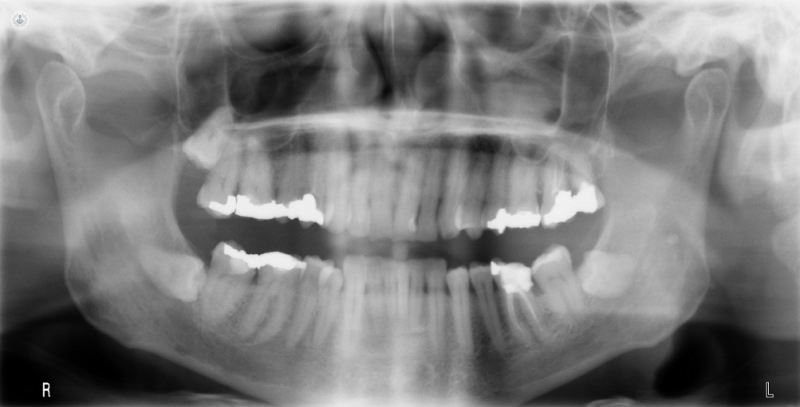Oral cancer: importance of early diagnosis and treatment.
Written by:Oral cancer can affect any part of the oral cavity and cases are expected to increase in the coming years. Although there are risk factors that enhance a proper diagnosis and early treatment they are essential.

Oral Cancer: What is.
Oral cancer can be defined as any malignant tumor that affects the structures of the oral cavity (lip, tongue, floor of the mouth, buccal mucosa, retromolar alveolar gum and palate). It is a real public health problem. According to the World Health Organization (WHO) there is an increase of 5,000 cases a year, and is expected to increase even more in the coming years.Oral cancer represents 2-4% of all malignant tumors of the body. In Spain the prevalence is 11-15 cases per 100,000 population in men and 2-6 cases per 100,000 inhabitants in women. This is the third highest prevalence of the European Union.Predominantly affects middle-aged population - Advanced, the average age at diagnosis 62 years. The risk of developing oral cancer increases with age. As for sex, it is three times more common in men than in women. By race, it is more common in African Americans and Southeast Asian populations than in Caucasians.
Areas usually manifests oral cancer.
In terms of location, although it can develop at any oral structure such as lip, tongue, floor of the mouth, buccal mucosa, retromolar alveolar gum and palate, the lower lip is the most common site of presentation, followed by the tongue .
Risk factors that enhance the Oral Cancer. Diagnosis.
According to experts in Oral and Maxillofacial Surgery , there are known risk factors linked to the development of oral cancer: Snuff, alcohol, betel and infection with human papillomavirus (HPV) are the most frequent. Other factors to which it relates are:- Certain infectious agents (Candida, Treponema pallidum, herpes simplex, HIV).- United immunosuppression.- Nutritional deficits (iron, vitamin A).- Poor oral hygiene.- Oral trauma.-Irritantes Chemicals (silver nitrate).Overall, we found the highest rates of oral cancer in the sectors of the population with lower socioeconomic status, where bad oral hygiene, use of defective or maladjusted dentures, nutritional deficits, and high consumption of snuff and alcohol, enhance the risk of developing this cancer. Against this profile affected, the patient is younger age, non-smoker, who develop oral cancer linked to infection of the lining of the mouth by the human papilloma virus, cancer better prognosis than that produced by factors classic risk (snuff and alcohol).In any case, early diagnosis is essential to improve the prognosis of these patients. The identification of flat lesions of white or reddish, painful sores or ulcers or be warning signs. Any injury of its kind in the oral cavity must be assessed by a maxillofacial surgeon.
Oral Cancer Treatment.
As for the treatment of oral cavity cancer, multidisciplinary approach (maxillofacial surgeon, oncologist, radiologist, nutritionist, etc.) remains of choice. In all cases the optimum treatment for each patient is selected based on:-Characteristics Tumor (location, size, proximity to bone, cervical involvement, previous treatment, tumor histology).-Idiosincrasia Patient (age, comorbidities, habits, profession, tolerance aggressiveness of treatment).- Media and experience of the medical team.Based on the above aspects, therapeutic tools that will be available will be surgery, radiation and chemotherapy.
Quality of life of patients with oral cancer and treatment success.
As for the quality of life of patients for oral cancer, it is important complete oral rehabilitation, including dentures. The good treatment planning provide the patient regains its air-digestive functions as soon as possible, accelerating social integration with the help of a speech therapist.Regarding prognosis of oral cancer, survival at 5 years in early stages is around 82%, while late diagnosis survival would drop to 53%. The overall survival rate for oral cancer is 60%; ie 40 out of 100 patients diagnosed with oral cancer die from this cause. As important as the treatment is patient monitoring. Relapses occur generally within the first year after initial treatment.In conclusion, early diagnosis and early optimal treatment for each patient individualized and performed by a qualified medical team, remain the key to success against oral cancer.


